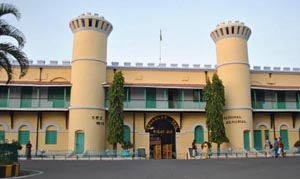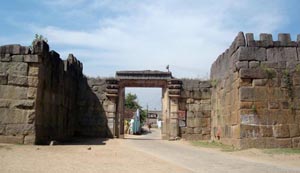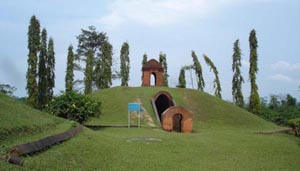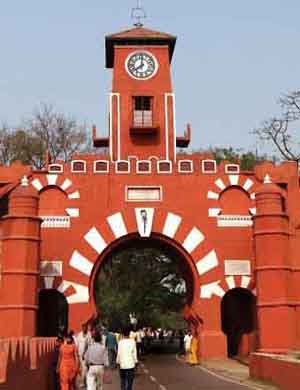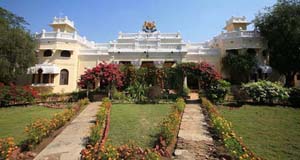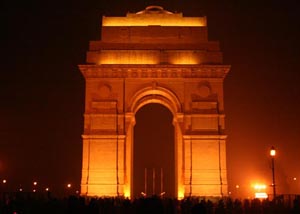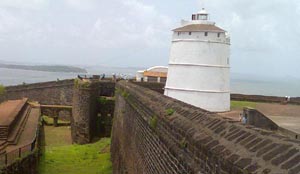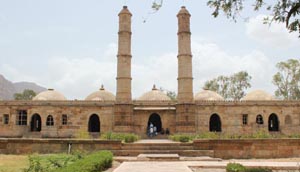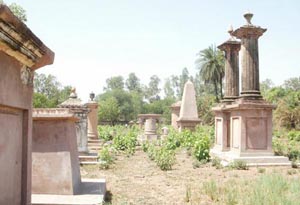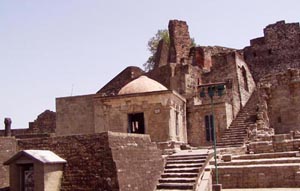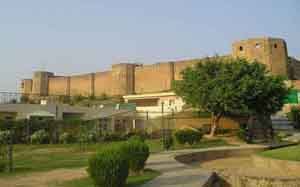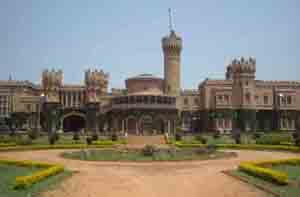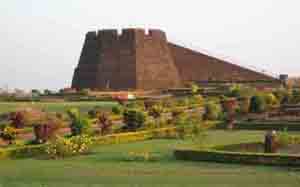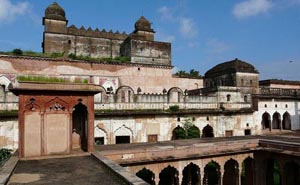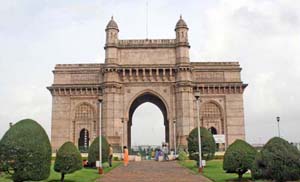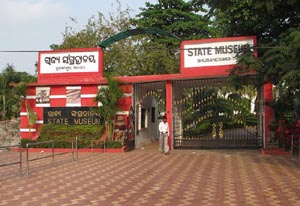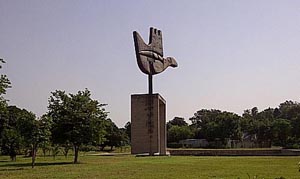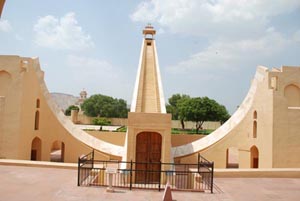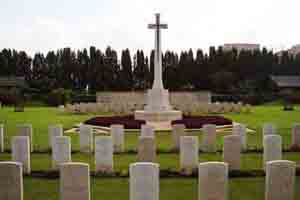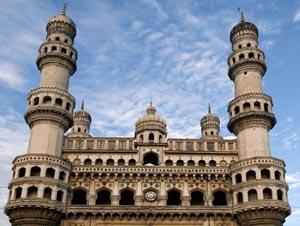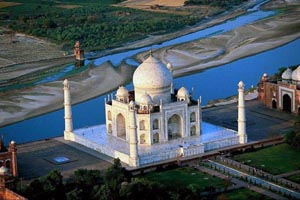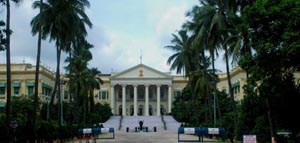Famous Indian Monuments - Historical Monuments of India
List of Names of Famous Historical Monuments Forts / Palaces / Places of India
Mankind has tried to keep up with the ever changing world and as we moved forward we have left milestones in history through many forms. One such form of milestone has stood the test of time making sure that the achievements and glorious past of mankind is not lost in between the folds of time are monuments. Each monument has its own historical background, cultural heritage, significance and a sense of timeless beauty captured in it. These monuments come in all shapes and sizes ranging from colossal to small, rough rock cuts to polished marbles, caves to open aired carvings, religious to celebratory, honorary to expressions of love etc. Some of the monuments are so colossal and intricately built that it baffles today's generation as to how it could be built during those ages when technology was not available giving rise to conspiracy theories about aliens and Gods helping or overseeing the work. All in all there are countless number of historical monuments scattered all over the world with their own stories, history, myths, legends, architectural styles and commemorative dates. Each Indian monument is unique in its own way and serves as a milestone for that particular region or time or ruler, builder etc.
Here you can find list of names and information on historical forts / palaces/ places / monuments in India. These famous monuments of India are most visited and most sought after best tourist places. You can also find images of Indian monuments / places / forts / palaces.
Andaman and Nicobar Islands Monuments »
Situated at the andaman and nicobar islands the cellular jail (Alafastan Jail) better known as "kala pani" (Black water) was basically prison for the freedom fighters of India during the colonial rule. The monument reveals the brutal torture faced by the imprisoned freedom fighter. Many of the freedom fighters were hanged till death, the remaining were sent to the cellular jail. Batukeshwar Dutt, Veer Savarker were amongst the imprisoned. Presently it is the national memorial monument highly esteemed by the Indians.
Andhra Pradesh Monuments »
Warangal Fort is located in Killa, Mathwada block, Warangal District, Telengana State of South India. It is a lost treasure of Kakatiya Dynasty who ruled the Deccan Province in the 13th Century AD. Currently it won't look like a fort with large walls and cannons. Since, it was attacked by the Khilgi dynasty of North India and what are seen here are the remains of vast man made destruction. Still its large arches and few magnificent structures remain strong enough to withstand in time.
Assam Monuments »
When we talk about its architectural phenomenon than the wisdom of Ahom dominates the entire property. Majestic sculptures and an open spaces around the tombs allows traveler to stroll freely while paying homage to a lost soul. Masons of medieval days have done incredible work to decorate it with perfection. An amazing floral of architecture is defined by its underground vaults where domed chambers is covered by earthen mounds beside that open pavilions of Charaideo would embark the mind of a traveler.
Bihar Monuments »
The fort comprised of the strong and huge fortification during the Mughal rule, and was also expanded. The fort was constructed with the magnificent arrangements, which comprised of the gates which were massive and huge. On one side of the entrance had a fortification, which was with the tower designed in square figure, and had a moat which was deep. The construction of the moat was huge with 175 feet in width, and neighboring the fort's land from all side.
Chhattisgarh Monuments »
The seventy years old building which still stands in the state of Chhattisgarh, is the palace named Bastar Palace. This palace is the residence for the royal family. The palace is located in Jagdalpur which comes under the district headquarters of Bastar State. This palace does not allow for the accommodation for the visitors who visit but the palace serves the visitors with the meals. One part of the palace today has been rehabilitated into medical college.
New Delhi Monuments »
The India Gate stands tall with a height of 42 metres and was designed in an arch shape pattern by Edwin Lutyens, a distinguished architect as well as leading war cenotaph designer. Lutyens is also responsible for designing the city of New Delhi. The inspiration of the design was derived from the monument, Arc de Triomphe in Paris. The final completion of the monument was done in the year 1931. The foundation stone of the monument was put down in the year 1921 by His Royal Highness, the Duke of Connaught.
Goa Monuments »
This fort is mainly two storey or tier structure. The upper segment of the store is used as watering station as well as keeping watch on the enemy or intruders during the period of 16th to 17th century. The lower end of the fort was used a berth to safely store of the ships used by the Portuguese rulers. The design of the interior of the fort hold strong resemblance with the Portuguese architecture as most part of the upper section of the fort.
Gujarat Monuments »
As per the reports of the archaeological department and the remnants present in the place, it can be ascertained that the park and its surrounding area has more 1700 years of history associated with it. The place has been built and established in the year 400 A. D. It was specifically built during the chalcolithic period. Historical reports also show that the hills that can be found around the park have been derived from the toe Kalika, the Hindu goddess.
Haryana Monuments »
European Cemetery is formed around the 19the century by the British East India Company (BEIC) officials serving the defense force in India. This grave was the result of the great Boer War happened in the South African countries from 1880 AD to 1881 AD and 1899 AD to 1902 AD. This was fought between the Bore Farmers of these settlements against the British colonial rule. This was a massive civil fight with British, which is also known as the Anglo Boer War in the world history.
Himachal Pradesh Monuments »
During the mid 18th Century, with the decline of the Mughal rule, King Raja Sansar Chand-II stepped up to rule over the fort. He was in a continuous conflict with the Gorkha who finally conquered the fort in the year 1805 after a battle of more than three years. Finally in the year 1846 maharaja Ranjit Singh conquered the Kangra Fort and his family captured the fort till the end of the British rule in India.
Jammu and Kashmir Monuments »
The Bahu Fort is situated in the city of Jammu, Jammu and Kashmir. The fort has been known to be in existence for around 3000 years and was initially constructed by Raja Bahulochan which was later again restored in the period of 19th century by the Dogra rulers. The fort is considered to be a sacred place and includes a temple within the premises. The temple is devoted to the revered Hindu goddess Kali who is also regarded as the main deity of Jammu.
Karnataka Monuments »
Bangalore palace is one of the popular memorials and tourism attractions in Bangalore of Karnataka. It was established by Wodeyar family in the year 1887. The design of Bangalore Palace has certain resemblance with feudal castle of England. Traditionally, the palace was enclosed by beautiful gardens, but at present it has lost its unique attraction. However, still, it thrives in enticing travellers.
Kerala Monuments »
In the contemporary world, a major part of the economies of nations are reliant on the tourism and hospitality sector. Historical significance of a place plays a major part in developing its tourism sector. Kerala is one of such places that have rich historical background owing to the presence of numerous historical monuments. One of such monuments is the Bekal fort that is located in the northern part of the state. It is constructed on a widespread area of 160,000 m2.
Madhya Pradesh Monuments »
Gohar Mahal is a splendid mansion of historical significance situated on the VIP road of Bhopal in the state of Madhya Pradesh. It is rightly located on the bank of Upper Lake. It is much similar to a Mahal. It is a best example of the perfect amalgamation of exquisite Mughal and excellent Hindu architecture. It is situated just behind the famous Shaukat Mahal. In this city, it is the most sought after place for hosting different types of cultural events, promotional and art exhibition and colorful fairs.
Maharashtra Monuments »
To honor the visit of King George V and Queen Mary, this enormous structured monument was established in the year 1911 in Mumbai. The governor of Mumbai (then Bombay), Sir George Sydenham Clarke laid the first foundation stone. The monument was erected in the year 1920 finally after the approval of the design by George Wittet on 1913. The then Viceroy of India, Rufus Daniel Isaacs, opened the Gateway in the 1924. This historical monument signifies the aspect of colonialisation along with suppression over the Indians by the British.
Odisha Monuments »
The Odisha (Orissa) state museum can be named as one of the prime and fascinating museums of India. Though the location of this museum has been changed several times but at present it resides in the BJP Nagar of Bhubaneswar in Odisha. All the maintenance and responsibility of this museum is borne by the Government and the Cultural Affairs sector of this state. Moreover, the historical related articles and crafts depicts the conventional history of the state of Odisha.
Punjab Monuments »
The foundation of the monument was a matter of extreme debate in the political domain of the country. This is because of the fact that the monument placed for collective decision making by the citizens of the city of Chandigarh against the societal and the political issues for the overall betterment. The monument includes a hand like structure which tends to rotate such as weather cock. It movement is directly dependent on the flow of weather.
Rajasthan Monuments »
Jantar Mantar of Jaipur is an astronomical prediction point on earth by man made. Its accuracy is plus or minus two minutes. It is one of the most tumid observatories ever built in the world. The name 'Jantar Mantar' means instrumental formula. It was built in 1727 by the great Rajasthan Royal King Jai Singh Maharaja II, who belongs to 'Rajput clans'. He was an armature astronomer in his time and his desire to popularize geometry was his motive behind the construction of this modern observatory. It is located in the capital city of Rajasthan called Jaipur, India. Jaipur is well accessible by airport, railways and roads.
Tamil Nadu Monuments »
The cemetery was built in the year 1952 post Second World War to be able to accommodate the graves of the civilians and cantonment who lost their lives during the war. The graves within the cemetery are mainly of the people of the south-eastern part of the country. The cemetery has more than 856 burials relevant to the Second World War. The main idea behind the establishment of the cemetery was by the 'Imperial War Graves Commission' which was headed by Saurav Goyal.
Telangana Monuments »
The Charminar is a wondrous monument and mosque in Old City of Hyderabad region, in the state of Telangana, India. The Mosque is on the second floor of this structure. It was build in 1591 CE. It is one of the most recognized structures of this nation. This particular landmark is the iconic attraction of Hyderabad, visited by huge number of tourists from across India and abroad. It is very near to Makkah Masjid and lies on the east bank of Musi River. The Urdu language words Char and Minar means in English language as "Four Towers".
Uttar Pradesh Monuments »
India is known to be a country that is rich in heritage and historically significant. The Mughal period, their architecture and monuments call for a compulsory mention when exploring the historical value of India. Historical monuments are considered to be an integral component of the country among which the Taj Mahal holds a place of intense connotation owing to its magnificent form of architecture. Taj Mahal is usually identified to be amongst the most admired form of Muslim art thus, making it a masterpiece with regard to global heritage.
West Bengal Monuments »
The Raj Bhawan covers the total area of 84,000 sq, and the compound of the entire Bhawan is covering 27 acres and has beautiful sprawling gardens. It comprises 6 gates in the total number and is found in the North and South and two on the East and West. The gateway of the East and West has an arch with the sculpture of the lion on the top of the arch. The trivial entrance on the side is placed with Sphinx.
So above we have seen list of famous Indian monuments. The monuments which are build all over India and they show us the rich heritage and varied architecture of our culturally rich nation.
- Andaman Nicobar Monuments
- Andhra Pradesh Monuments
- Assam Monuments
- Bihar Monuments
- Chhattisgarh Monuments
- New Delhi Monuments
- Goa Monuments
- Gujarat Monuments
- Haryana Monuments
- Himachal Pradesh Monuments
- Jammu and Kashmir Monuments
- Karnataka Monuments
- Kerala Monuments
- Madhya Pradesh Monuments
- Maharashtra Monuments
- Odisha Monuments
- Punjab Monuments
- Rajasthan Monuments
- Tamil Nadu Monuments
- Telangana Monuments
- Uttar Pradesh Monuments
- West Bengal Monuments
